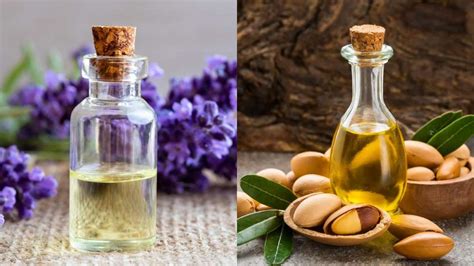Hair is a defining feature that can enhance a person’s confidence and overall appearance. However, many factors, including environmental stressors, chemical treatments, and poor nutrition, can damage hair, making it dry, brittle, and prone to breakage.

This is where the power of natural oils comes in. Oils are rich in nutrients that can penetrate the hair shaft, providing deep nourishment and hydration. They have been used for centuries in various cultures to promote hair health and beauty.
- Moisturize and Hydrate: Oils act as emollients, locking in moisture and preventing dryness. They penetrate the hair shaft, providing deep nourishment and hydration.
- Prevent Breakage: Oils strengthen the hair shaft, reducing breakage and split ends. They create a protective barrier that shields the hair from environmental damage and heat styling.
- Promote Growth: Oils stimulate blood circulation in the scalp, promoting hair growth and reducing hair loss. They contain essential nutrients that nourish the hair follicles and promote healthy growth.
- Reduce Frizz and Tangles: Oils smooth the hair cuticle, reducing frizz and tangles. They create a glossy finish and make hair easier to manage.
- Protect from Heat Damage: Oils act as heat protectants, shielding hair from the damaging effects of heat styling tools. They form a protective layer that prevents moisture evaporation and heat penetration.
Different hair types require specific oils to address their unique needs. Here’s a guide to help you choose the best oil:
| Hair Type | Recommended Oils |
|---|---|
| Dry Hair | Argan oil, jojoba oil, coconut oil, olive oil |
| Oily Hair | Tea tree oil, rosemary oil, lavender oil, lemongrass oil |
| Color-Treated Hair | Avocado oil, almond oil, grape seed oil |
| Frizzy Hair | Avocado oil, argan oil, coconut oil |
| Thin Hair | Rosemary oil, lavender oil, peppermint oil |
| Thick Hair | Olive oil, castor oil, argan oil |
- Argan Oil: Known as “liquid gold,” argan oil is rich in antioxidants and vitamin E. It deeply nourishes and moisturizes hair, repairs damage, and prevents breakage.
- Coconut Oil: Lauric acid in coconut oil has a high affinity for hair proteins. It penetrates deeply, sealing in moisture and preventing damage. It also promotes hair growth and reduces frizz.
- Jojoba Oil: Structurally similar to the natural oils produced by the scalp, jojoba oil is an excellent moisturizer. It balances oil production, prevents dryness, and promotes scalp health.
- Olive Oil: Rich in oleic acid and antioxidants, olive oil nourishes and strengthens hair. It is an excellent choice for dry and damaged hair, providing deep hydration and reducing breakage.
- Avocado Oil: Avocado oil is rich in vitamins A, D, and E, as well as fatty acids. It deeply nourishes and moisturizes hair, promotes growth, and reduces frizz.
- Almond Oil: Almond oil is rich in vitamin E and fatty acids. It strengthens hair follicles, promotes growth, and reduces hair loss. It is an excellent choice for color-treated hair.
- Rosemary Oil: Rosemary oil stimulates blood circulation in the scalp, promoting hair growth and reducing hair loss. It is also an excellent choice for oily hair as it helps regulate oil production.
- Tea Tree Oil: Tea tree oil has antifungal and antibacterial properties. It helps treat scalp conditions such as dandruff and psoriasis. It also promotes hair growth and reduces hair loss.
- Castor Oil: Castor oil is rich in ricinoleic acid, which has antibacterial and antifungal properties. It promotes hair growth, reduces hair loss, and nourishes the scalp.
- Grapeseed Oil: Grapeseed oil is rich in antioxidants and vitamin E. It protects hair from damage, strengthens hair follicles, and promotes hair growth.
- Pre-Shampoo Treatment: Apply oil to your hair and scalp for 30 minutes to 2 hours before shampooing. This allows the oil to penetrate deeply and absorb into the hair shaft.
- Post-Shampoo Treatment: Apply a small amount of oil to the ends of your hair after shampooing and conditioning. This helps seal in moisture and protect hair from heat styling.
- Leave-In Conditioner: Add a few drops of oil to your leave-in conditioner and apply it to damp hair. This helps condition hair, reduce frizz, and promote shine.
The frequency of using oils for hair depends on your hair type and needs. Generally, it is recommended to use oils:
| Hair Type | Frequency |
|---|---|
| Dry Hair | 1-2 times per week |
| Oily Hair | 1-2 times per month |
| Color-Treated Hair | 1-2 times per month |
| Frizzy Hair | 2-3 times per week |
| Thin Hair | 1-2 times per week |
| Thick Hair | 1-2 times per month |
Incorporating natural oils into your hair care routine can significantly improve the health and appearance of your hair. These oils provide deep nourishment, moisture, and protection, strengthening hair, reducing breakage, and promoting healthy growth. By choosing the right oil for your hair type and using it regularly, you can unlock the beauty of your locks and achieve luscious, healthy hair.
